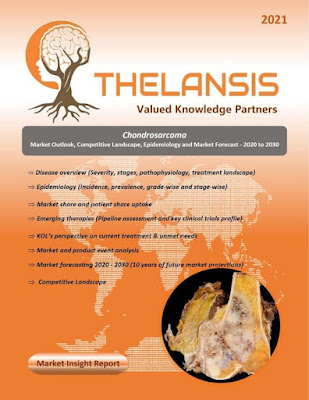Scurvy – Market Outlook, Epidemiology, Competitive Landscape, and Market Forecast Report – 2023 To 2033
Scurvy presents as a clinical syndrome stemming from an inadequate vitamin C. Within 4 to 12 weeks after discontinuing vitamin C consumption, the body's reservoir of this vitamin typically becomes depleted. Various factors can negatively impact the absorption and functions of ascorbic acid. Unlike most animals, humans cannot synthesize their vitamin C and thus depend on external sources. Vitamin C is essential for humans, while other animals don't require it from external sources. Several factors can lead to vitamin C deficiency, including alcoholism, infants relying solely on cow's milk, elderly individuals subsisting on a tea and toast diet, economically disadvantaged individuals with limited access to fruits and vegetables, smokers, those with eating disorders, individuals with Type 1 diabetes requiring higher vitamin C intake, people with gastrointestinal conditions like inflammatory bowel disease, those with iron overload leading to excessive vitamin C excretion by the kidneys, and individuals following restrictive diets or dealing with food allergies. Direct supplementation is the norm to remedy vitamin C deficiency, with recommended daily doses of up to 300 mg for children and between 500 mg to 1000 mg for adults. The differential diagnosis encompasses various skin-related purpura conditions, such as immune thrombocytopenic purpura, Henoch-Schonlein purpura, disseminated intravascular coagulation, Rocky Mountain spotted fever, meningococcemia, and hypersensitivity vasculitis.
- The prevalence of vitamin C deficiency stands at 8.4%, with higher rates observed in Europe, particularly 10% among men and 6.9% among women.
Thelansis’s “Scurvy Market Outlook, Epidemiology, Competitive Landscape, and Market Forecast Report – 2023 To 2033" covers disease overview, epidemiology, drug utilization, prescription share analysis, competitive landscape, clinical practice, regulatory landscape, patient share, market uptake, market forecast, and key market insights under the potential Scurvy treatment modalities options for eight major markets (USA, Germany, France, Italy, Spain, UK, Japan, and China).
KOLs insights of Scurvy across 8 MM market from the centre of Excellence/ Public/ Private hospitals participated in the study. Insights around current treatment landscape, epidemiology, clinical characteristics, future treatment paradigm, and Unmet needs.
Scurvy Market Forecast Patient Based Forecast Model (MS. Excel Based Automated Dashboard), which Data Inputs with sourcing, Market Event, and Product Event, Country specific Forecast Model, Market uptake and patient share uptake, Attribute Analysis, Analog Analysis, Disease burden, and pricing scenario, Summary, and Insights.
Thelansis Competitive Intelligence (CI) practice has been established based on a deep understanding of the pharma/biotech business environment to provide an optimized support system to all levels of the decision-making process. It enables business leaders in forward-thinking and proactive decision-making. Thelansis supports scientific and commercial teams in seamless CI support by creating an AI/ ML-based technology-driven platform that manages the data flow from primary and secondary sources.



Comments
Post a Comment